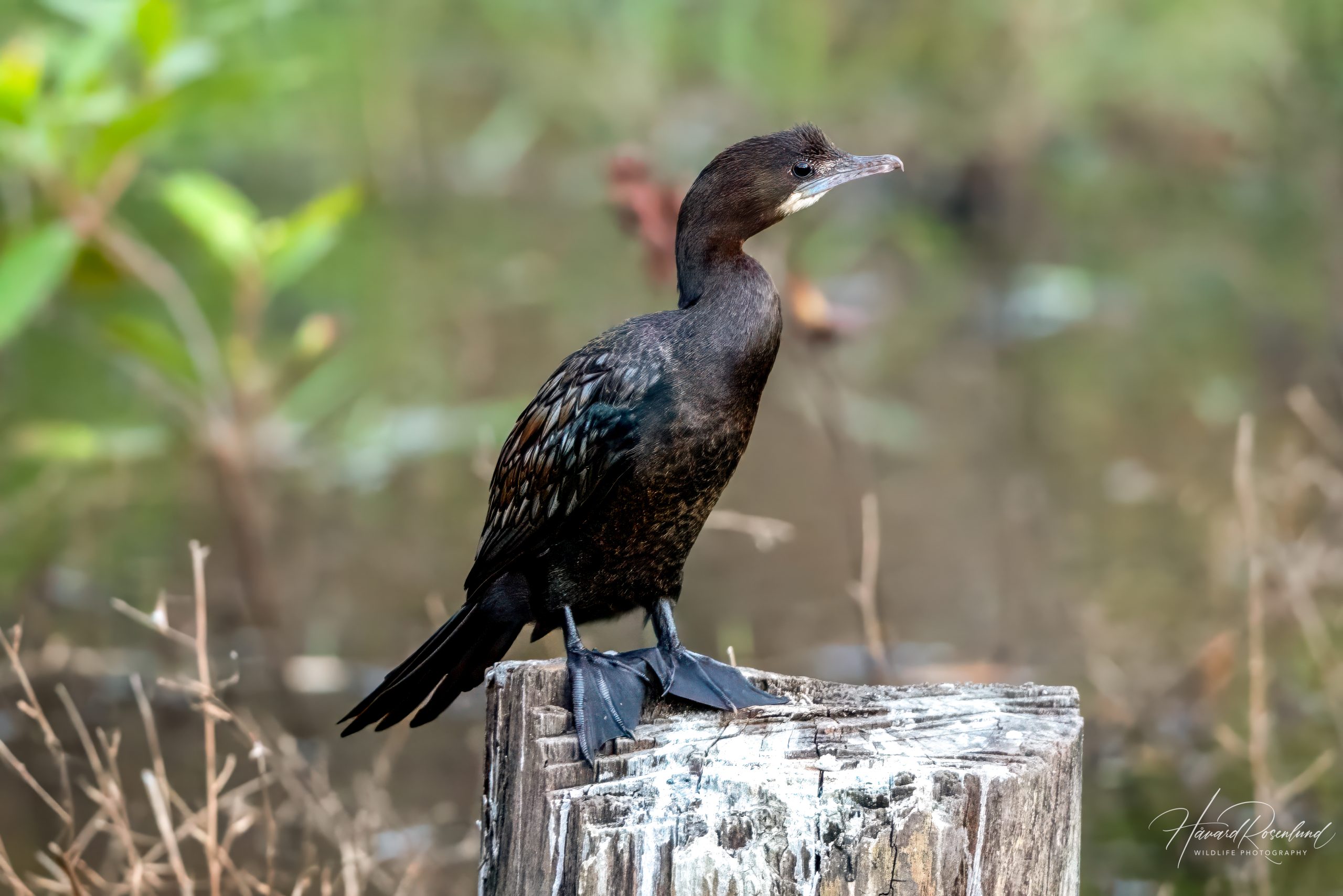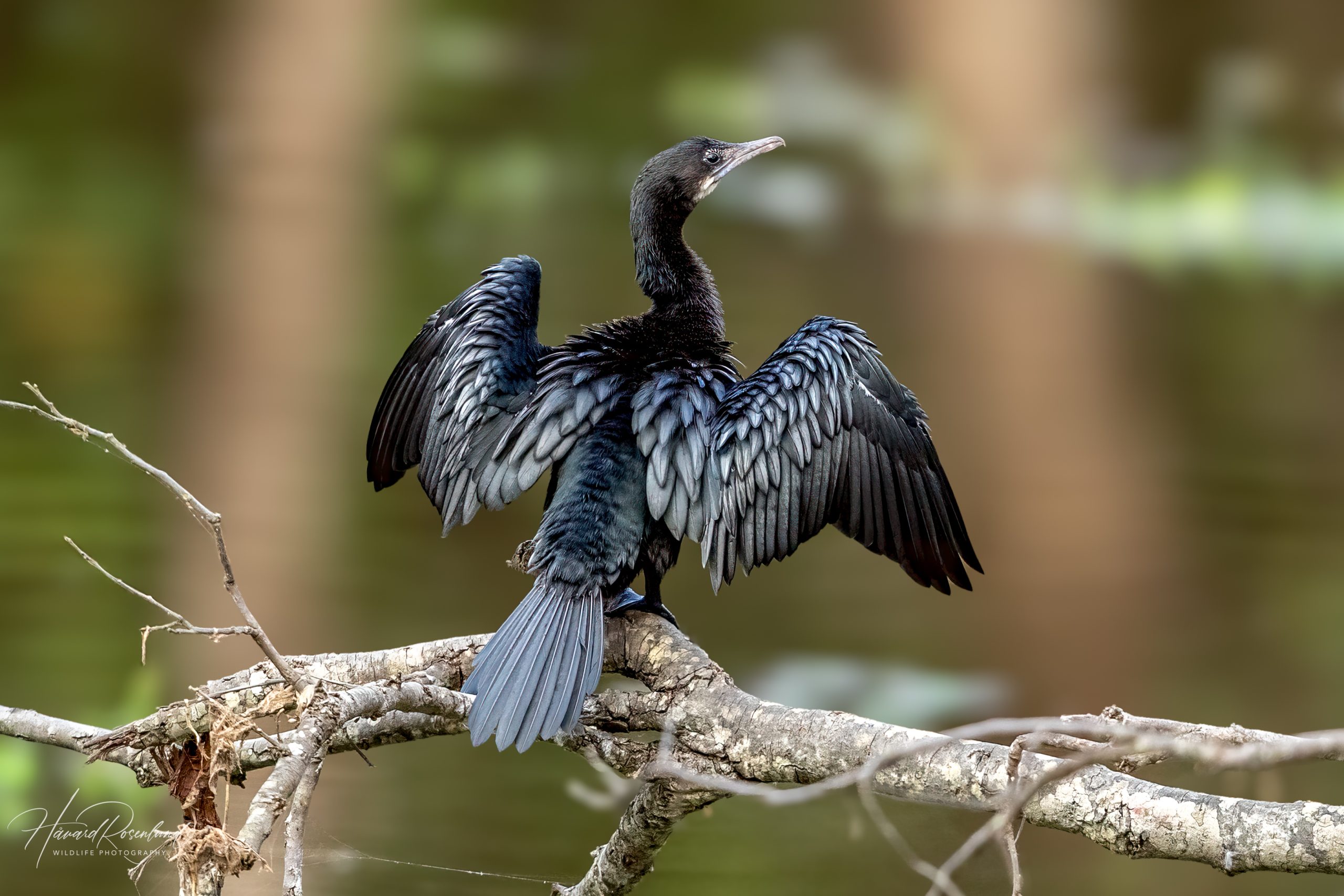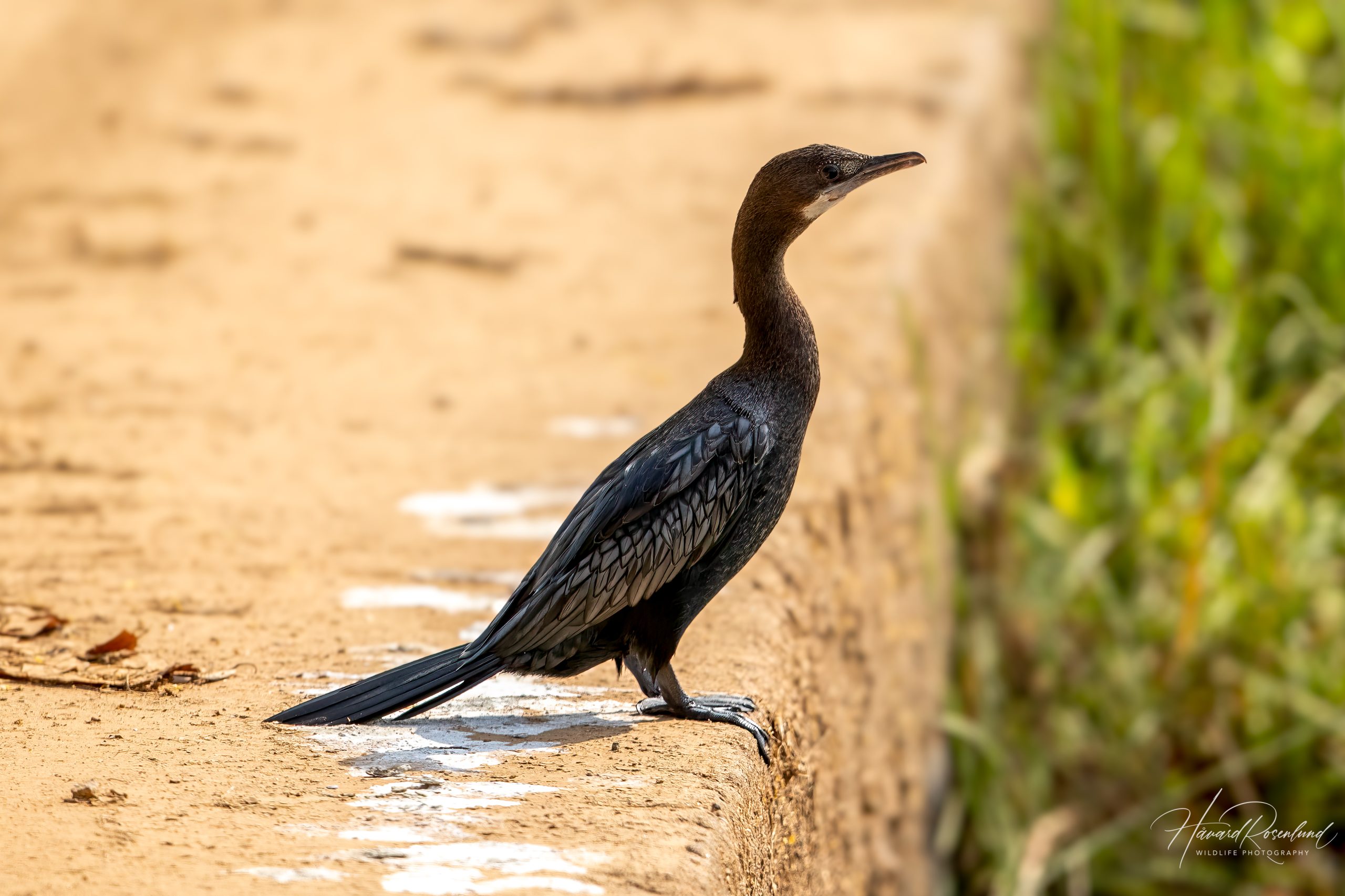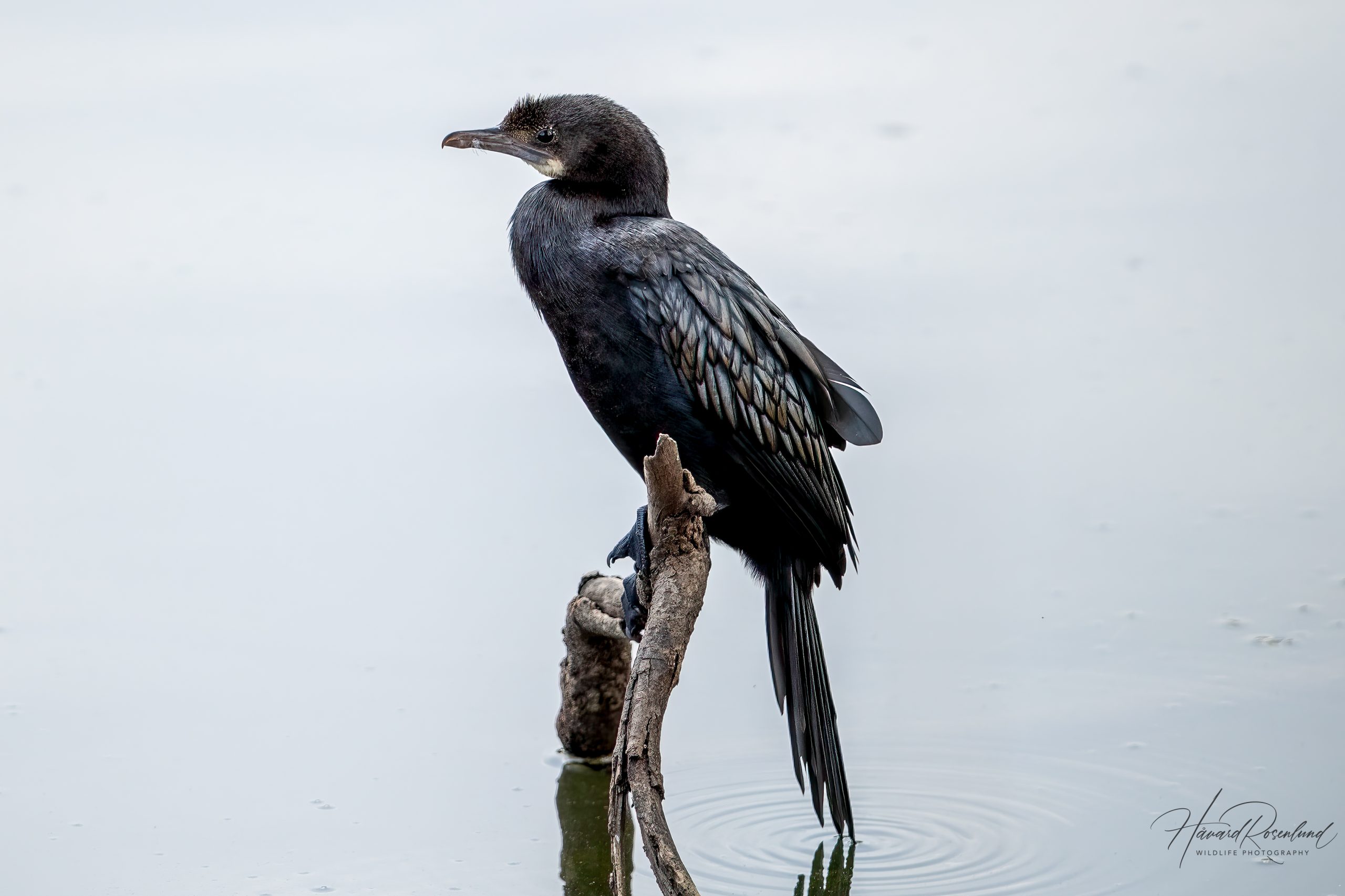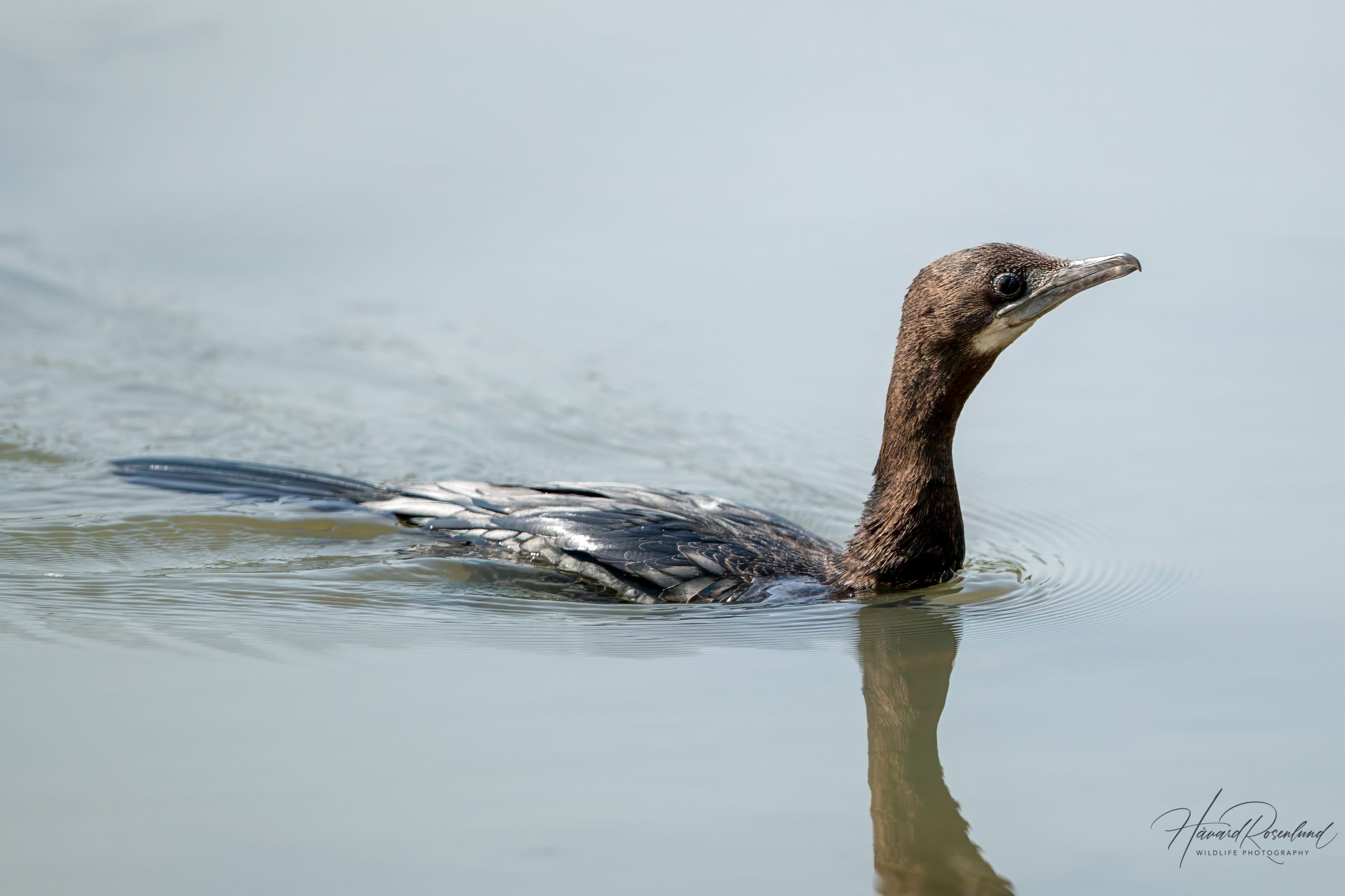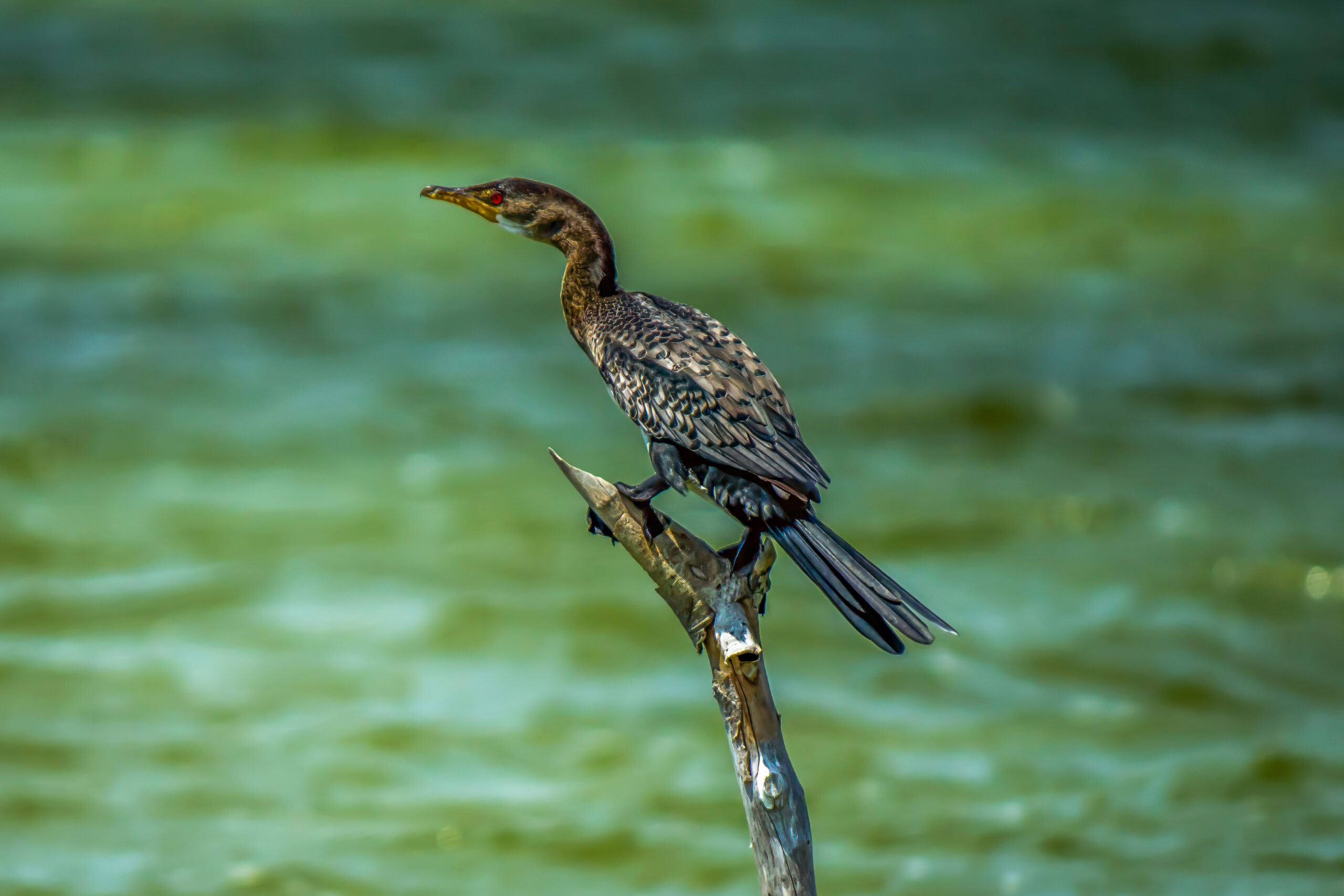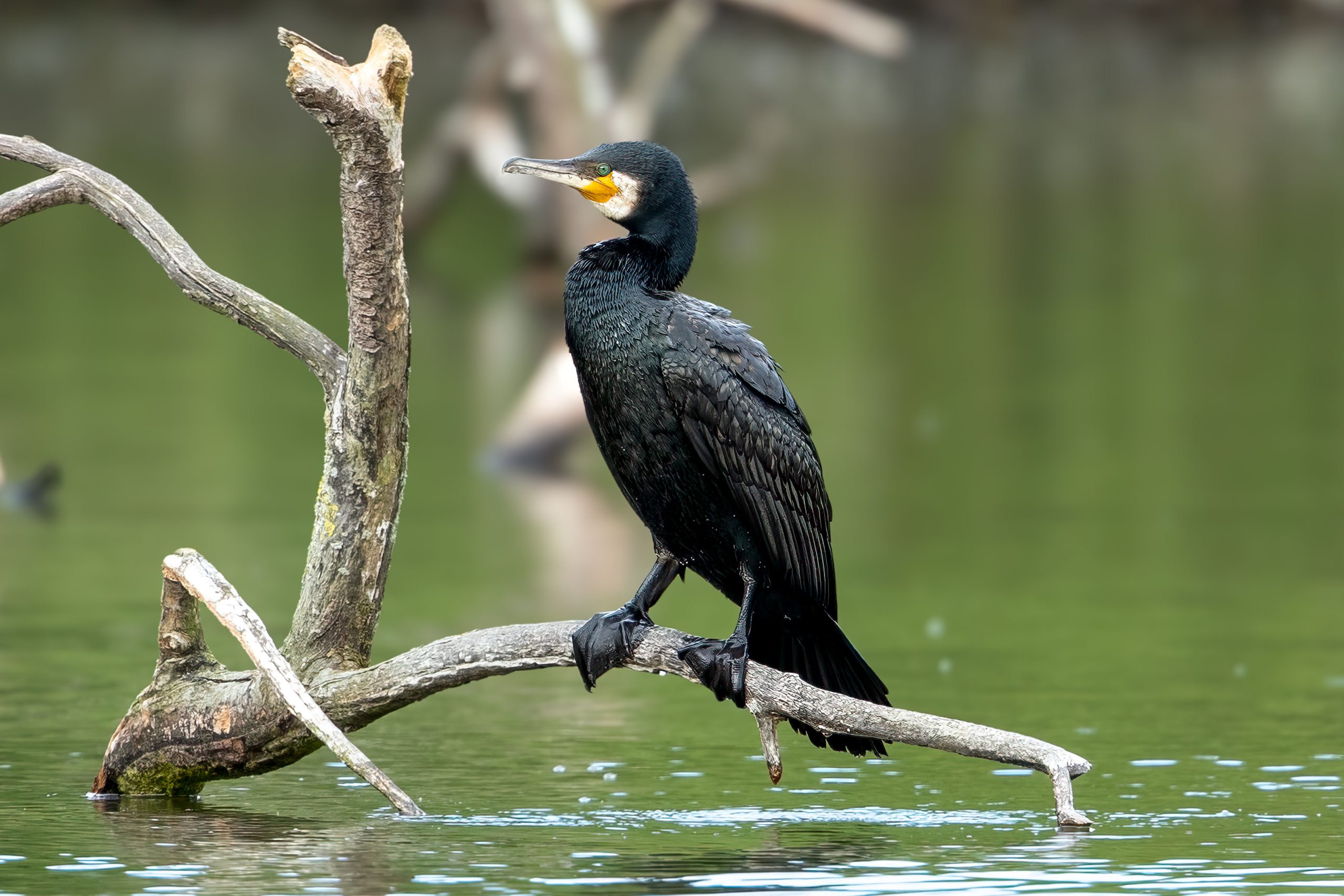Description
The little cormorant (Microcarbo niger) is a small member of the cormorant family, distinguished by its slender build and dark plumage. Its range extends across the Indian subcontinent, Southeast Asia, and parts of China and Indonesia. This bird measures about 50 cm (20 inches) in length, with a wingspan of approximately 85 cm (33 inches). It is predominantly black, with a glossy sheen that can appear greenish in sunlight. During the breeding season, adults exhibit white patches on their throats and sides of the head, which are absent in non-breeding individuals. The little cormorant can be confused with the Indian cormorant (Phalacrocorax fuscicollis), but it can be differentiated by its smaller size, shorter bill, and lack of the Indian cormorant’s distinctive blue eye.
Diet & habitat
The little cormorant is highly adaptable and can be found in a variety of wetland habitats, including rivers, lakes, ponds, and marshes, as well as in coastal areas. It prefers shallow waters where it can easily hunt for food. This bird primarily feeds on fish, but it also consumes amphibians, crustaceans, and insects. Its hunting technique involves diving and swimming underwater using its webbed feet to propel itself and catch prey with its sharp bill.
Little cormorants are known for their cooperative feeding behavior. They often hunt in groups, herding fish into shallower areas to make them easier to catch. After feeding, they can frequently be seen perched with wings outstretched to dry, a characteristic behavior of cormorants due to their partially wettable plumage.
Nesting
The breeding season of the little cormorant varies geographically but typically occurs during the monsoon season when food is abundant. These birds are colonial nesters, often forming large breeding colonies in trees or shrubs near water. The nests are constructed from twigs and vegetation, lined with softer materials.
A typical clutch consists of 3-5 eggs, which are pale blue or greenish. Both parents share the duties of incubating the eggs, which lasts about 15-21 days. After hatching, the chicks are altricial, meaning they are born naked and helpless, requiring extensive parental care. They are fed regurgitated food by both parents and fledge approximately 4-5 weeks after hatching.
Status
The little cormorant is currently listed as least concern by the IUCN Red List. It has a wide distribution and a large, stable population. However, it faces threats from habitat destruction, pollution, and disturbance from human activities. Wetland drainage and degradation are significant concerns, as they reduce the available habitat for feeding and breeding. Conservation efforts focused on wetland preservation and pollution control are essential to ensure the ongoing stability of its population.




